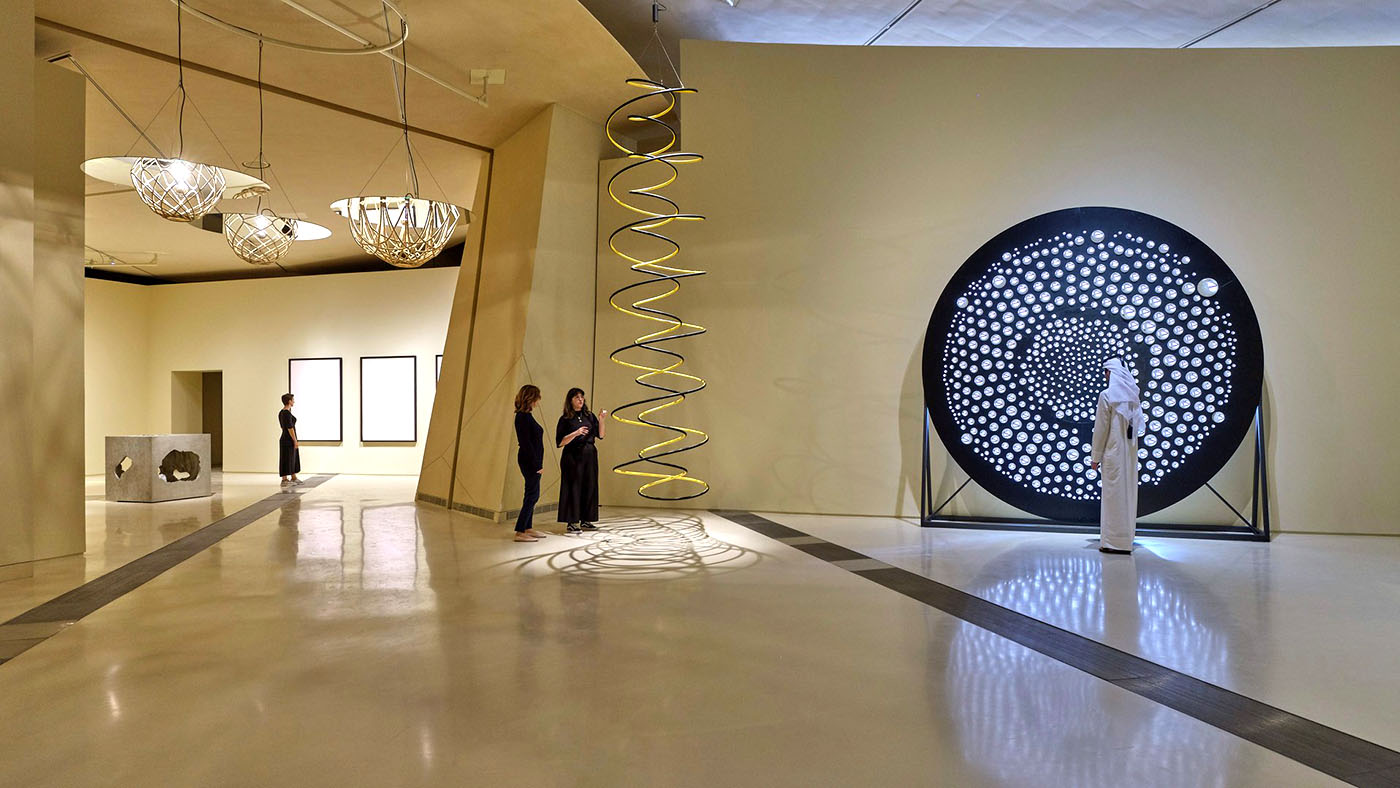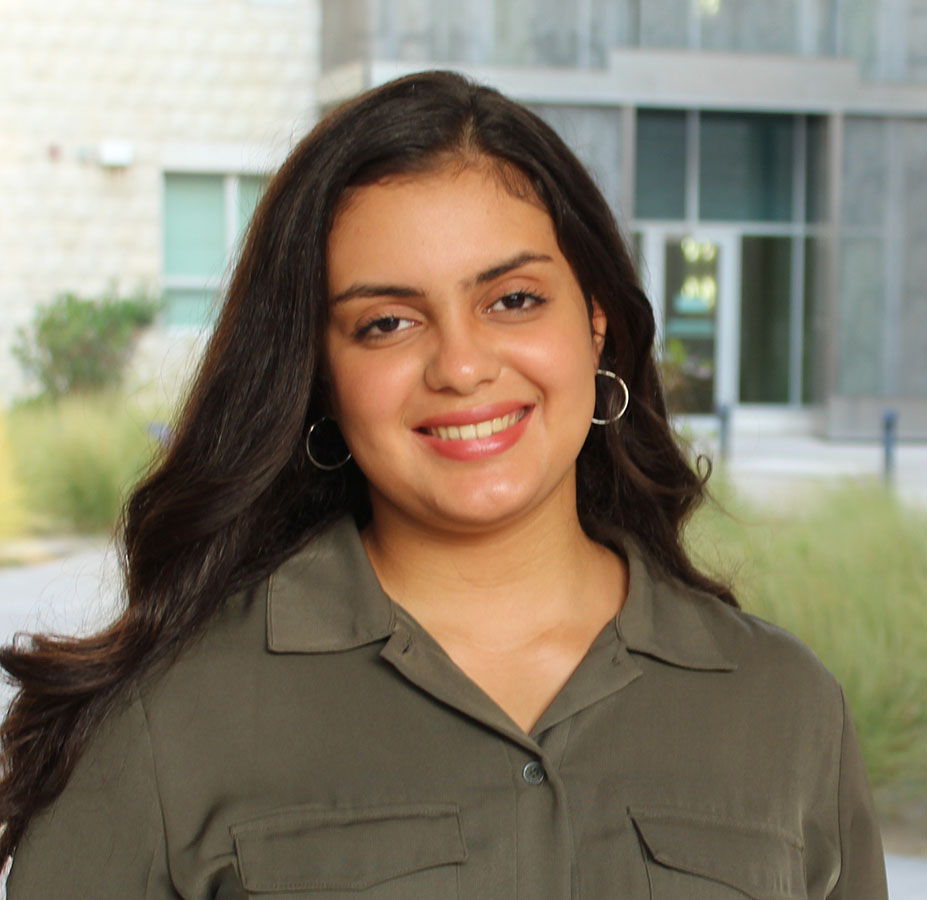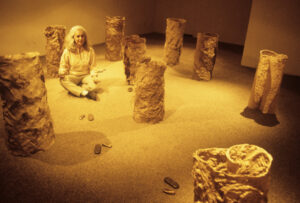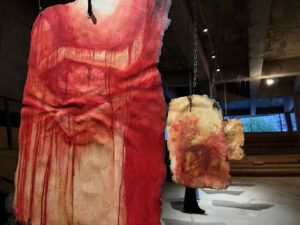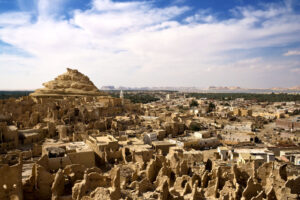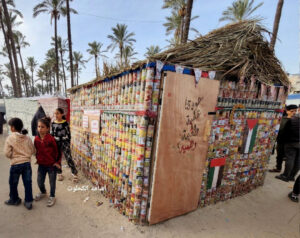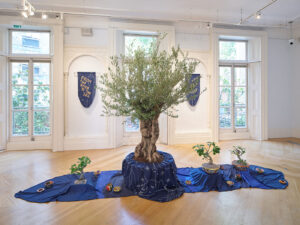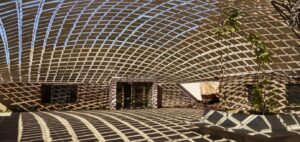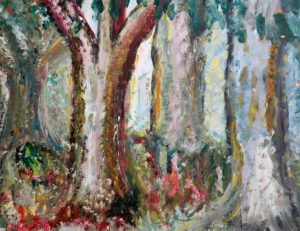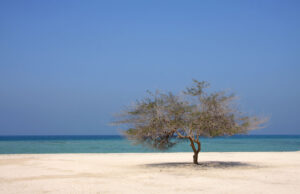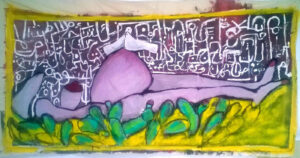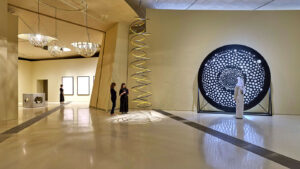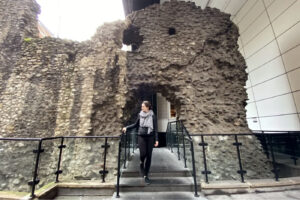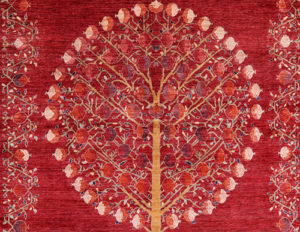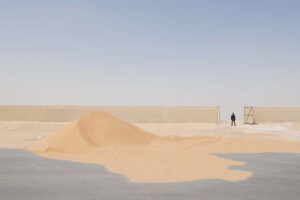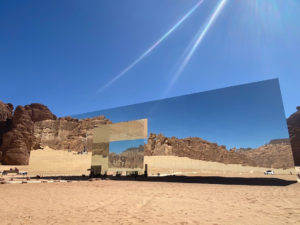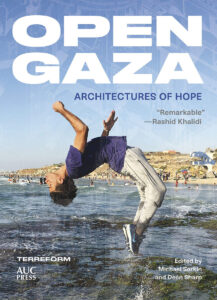Art and installations inspired by the desert remind museumgoers about the urgent need for environmental sustainability.
Safae Daoudi
A visitor to the Doha exhibition The Curious Desert, on view at the National Museum of Qatar through the 15th of August, couldn’t help but wonder, why would a Nordic artist focus on the desert, and why Qatar? This is Olafur Eliasson’s first solo exhibition in the Gulf. Born in 1967, Eliasson spent his early years between Iceland and Denmark, two Scandinavian countries known for their extremely cold weather, which contrast starkly with Qatar’s scorching temperatures and arid landscapes.
“Although they could not be more different, the sandy landscape of Qatar and the lava fields of Iceland,” Eliasson says in the exhibition literature, “are in a certain sense connected. They both experience extreme temperatures; they are both deserts. They are both fragile and vulnerable landscapes.”
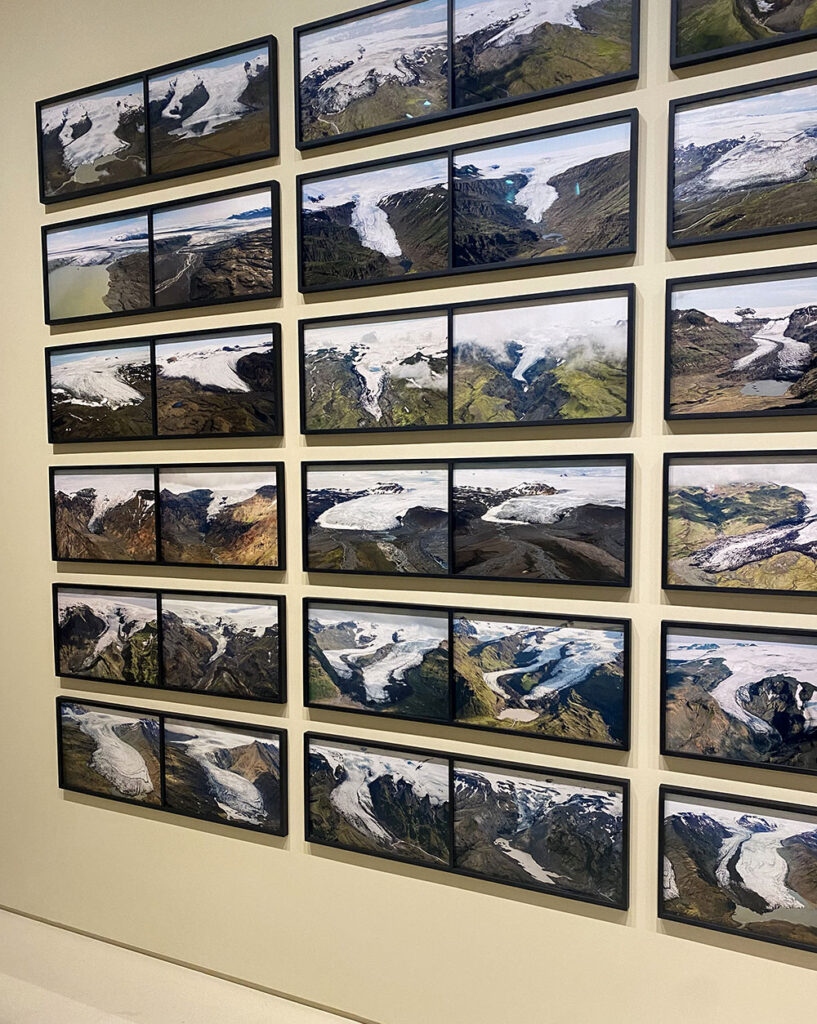
Eliasson elaborated further in a recent interview with Ocula: “The landscapes of Qatar share certain qualities with the Icelandic landscape, although in other respects they may seem to be as different as could be. Both environments might initially appear barren to humans, but on closer inspection they reveal themselves to be intricate ecosystems that are full of life. The ecologists we worked with on analyzing the Al-Thakhira site, for example, observed numerous scorpions and lizards, such as Arnold’s fringe-toed lizard and Blanford’s short-nosed desert lizard, and many types of birds, including Indian reef herons and common redshanks. They also found a healthy population of Arabian red fox in the area. I was inspired at the prospect of creating works that respond to this landscape. For me, Iceland has always been a site for trying out and exploring artistic ideas — a kind of experimental laboratory, if you will.”
Last year his installation, “Shadows Travelling on the Sea of the Day” 2022, steel, fiberglass and glass mirrors, was unveiled in the northwestern desert of the Qatar peninsula, outside Al Zubarah. The artworks explored how our perception of the world impacts our relationship to reality.
In March, the NMoQ launched The Curious Desert: Indoor Works by the Danish artist, which has been complemented by an extensive outdoor installation that includes 12 open-air pavilions 64 miles outside of the capital city, in the Al Thakhira Mangrove Reserve.
Eliasson’s photography, sculpture, installation, and painting within the museum’s complex reveal his dedication to utilizing art as a platform to raise ecological awareness. The artwork and themes, diverse and thought provoking in their scope, highlight the importance of ecological preservation.
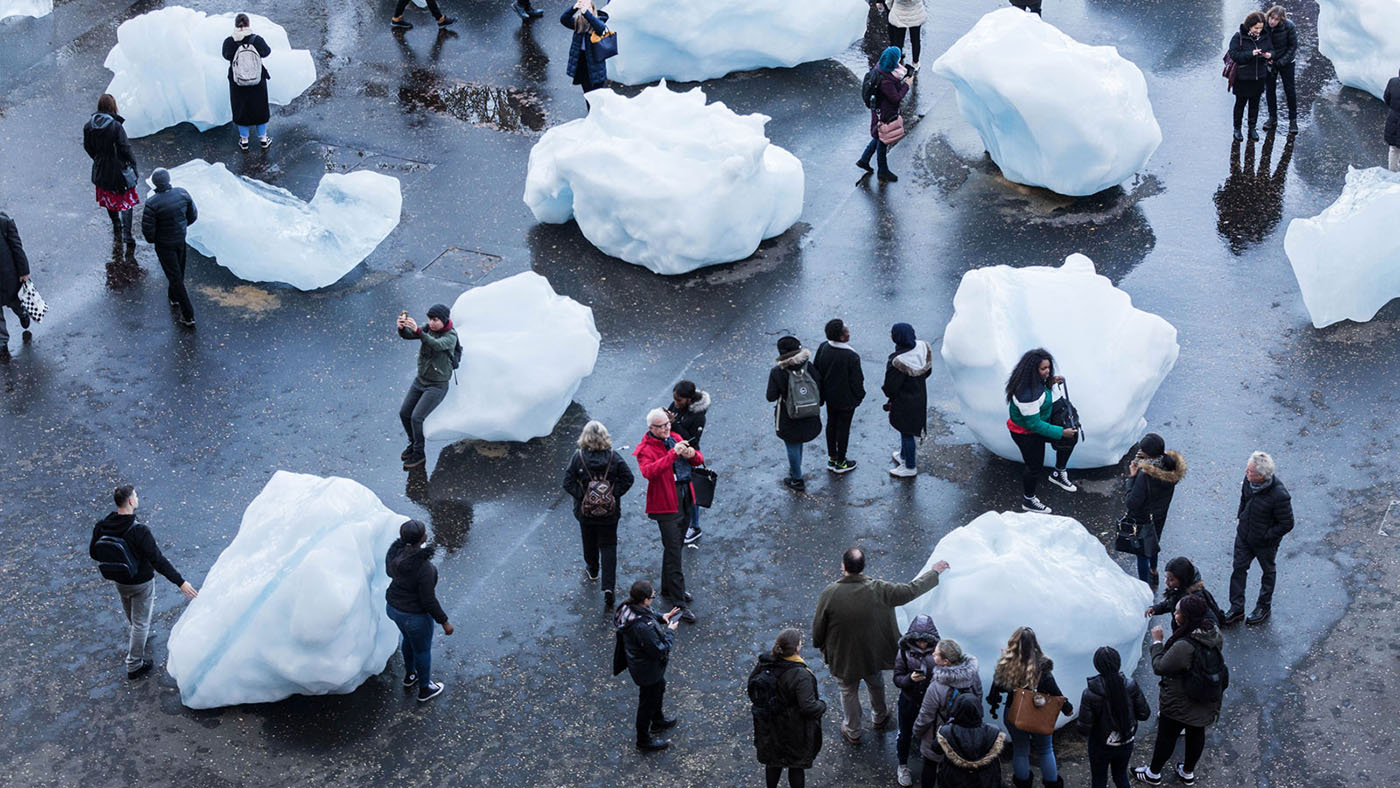
Upon entering the museum in Doha, a “Research Wall” greets visitors. Myriad ideas and topics spanning ecology, the environment, climate change, and much more fill an extensive pin board.
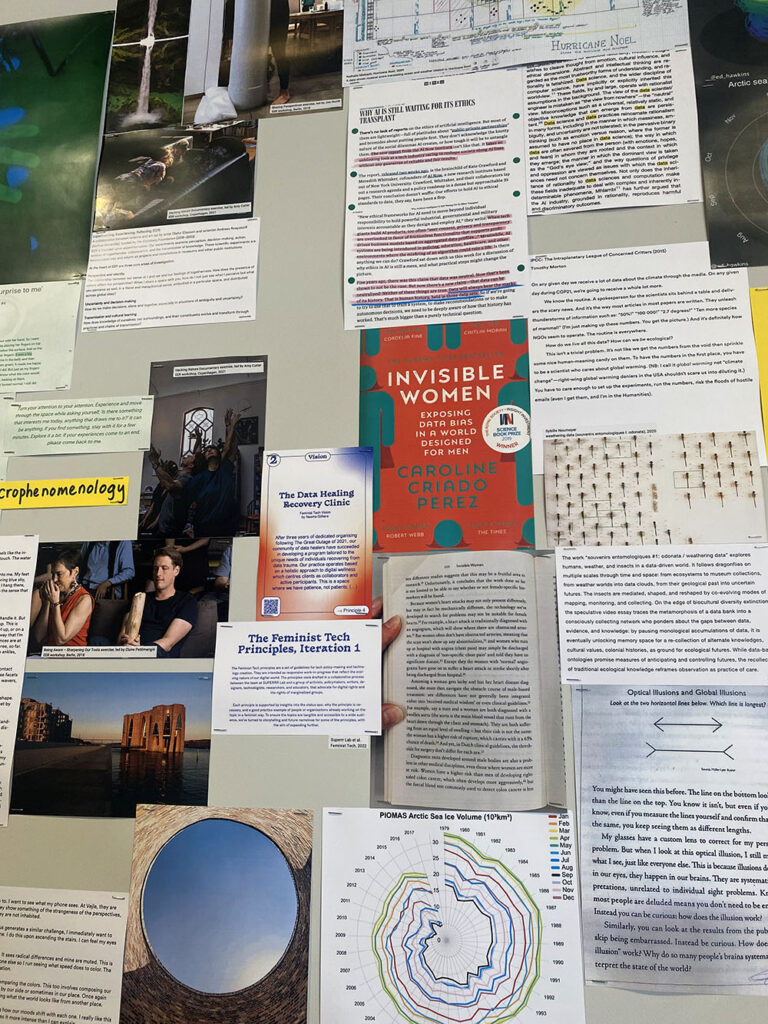
The art has been organized into six rooms, each offering an immersive experience, which in showcasing wide-ranging art techniques encourages introspection and piques curiosity about the processes of the natural world.
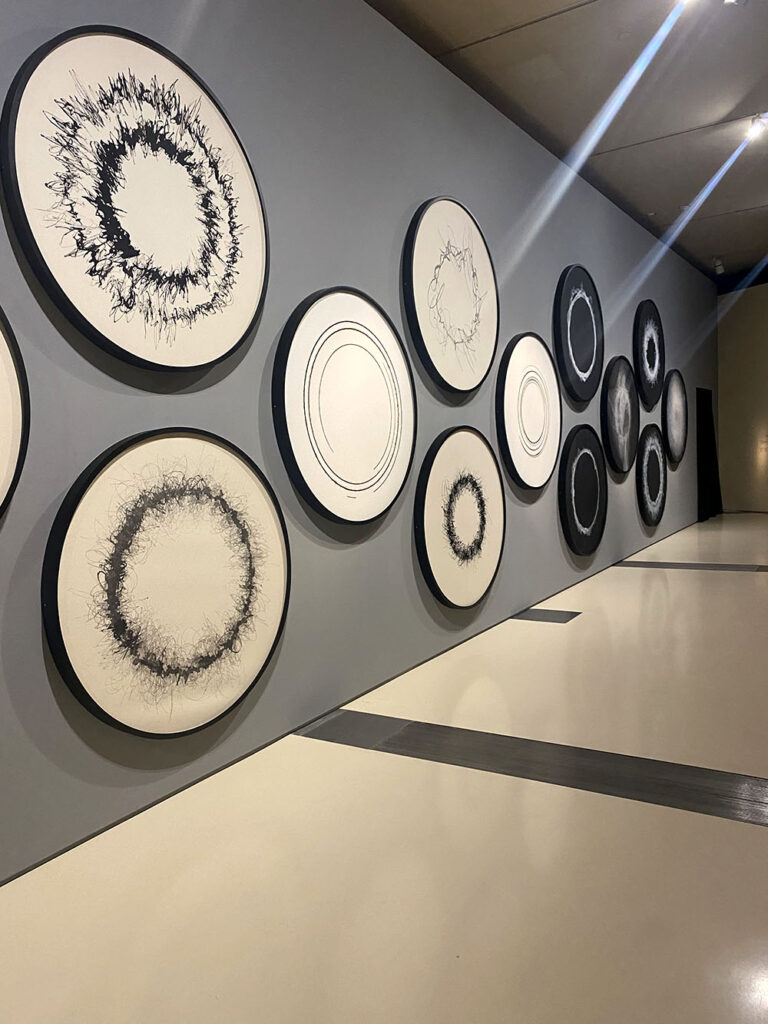
In Room Three, Eliasson unveils a captivating collection of sculptural forms showcasing a diverse range of shapes from spheres and curves that indicative of his artistic expression through the years. The artworks are inspired by geometrical research conducted by Eliasson and his team in his Berlin studio and push the boundaries of conventional notions surrounding geometry, architecture, and art.
Perhaps the most striking piece in the room is the “Algae Window” (2020), featuring an arrangement of glass spheres meticulously assembled on a wall. The artwork echoes the delicate beauty of diatoms, a type of single celled algae that plays a key role in the ecosystem, by removing large amounts of carbon from the atmosphere.
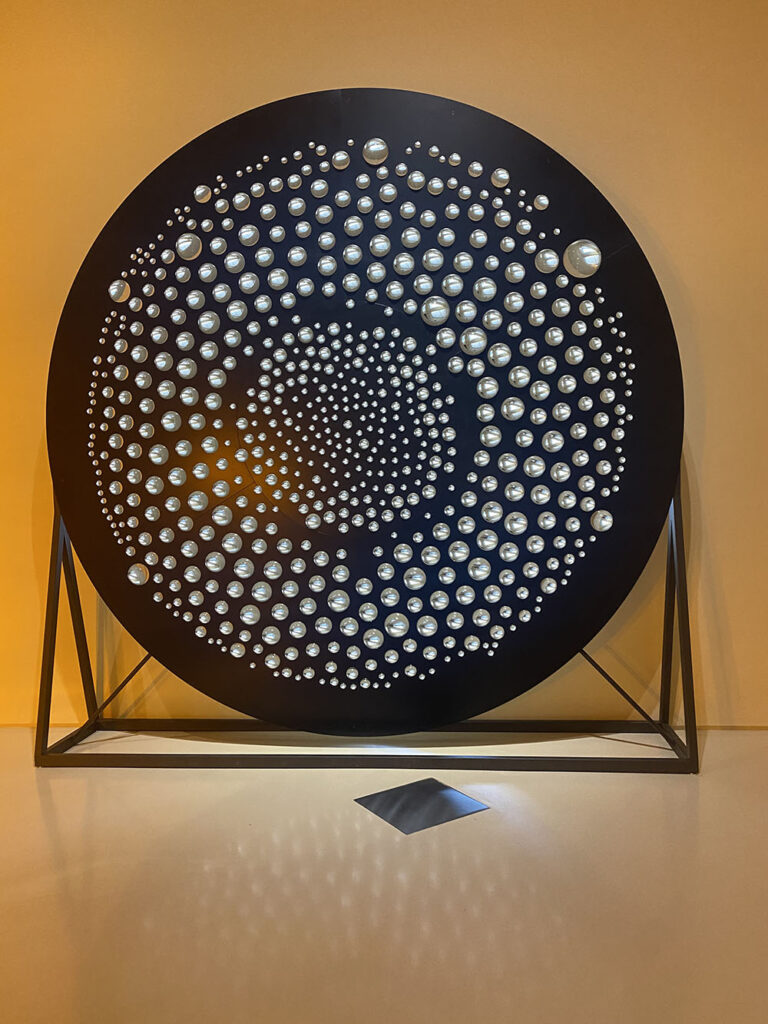
One notable installation, in Room Six, features circular works, created by a machine set up in Eliasson’s laboratory in Al Thakhira Mangrove Reserve. These mesmerizing pieces employ sunlight to burn rotating papers, in a fusion of art and solar power.
The exhibition serves as a visual testament to some of the most pressing ecological challenges of our time. The artwork and installations shed light on the intricate ecological balance necessary for sustaining life in the harsh desert environment.
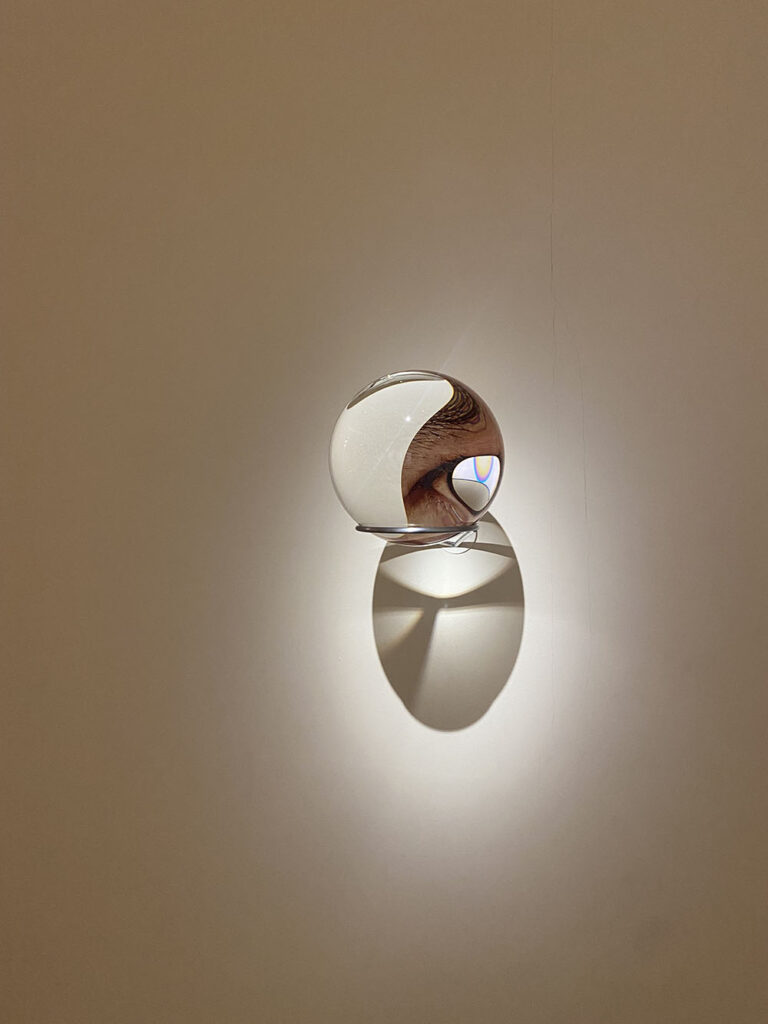
“For the outdoor site of The Curious Desert,” Eliasson explained to Ocula, “we worked with ecologist Dr Aspa D. Chatziefthimiou to understand the plants and animal species that live in the area. Under Dr Aspa’s guidance, we chose a site that had the least impact on the species living there. At the end of the exhibition, we will of course ensure we leave things as we found them, but we are also in talks with the Qatar Ministry of Environment and Climate Change to draw up a remediation plan for improving the quality of the site, making it, in fact, more habitable than it was before the artworks arrived.”
The Curious Desert is not only captivating and beautiful, its expansiveness and detail underscore the urgency with which we must engage in environmental preservation. Visitors are left with a profound appreciation for the fragility and interconnectivity of natural ecosystems, even as the exhibition inspires an appreciation for the aesthetics and art of environmental sustainability.



